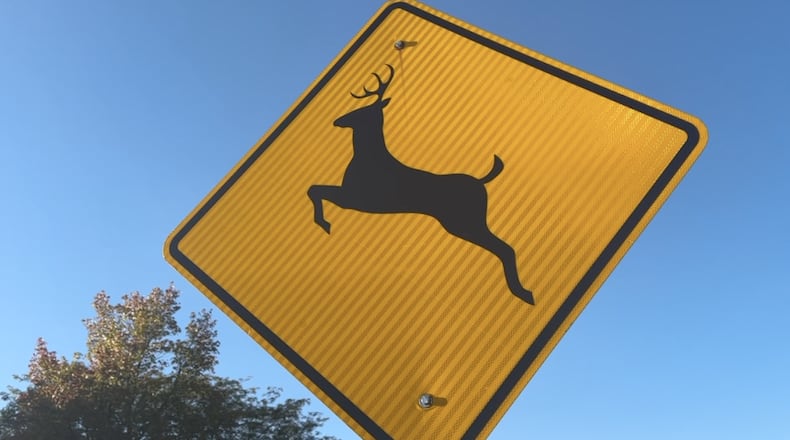According to the contract, White Buffalo’s sharpshooters would be allowed to bait deer into specified locations in town, shoot them, and then deliver the meat to be processed and donated to area food banks.
We went to Oxford Oct. 8, and it was a matter of minutes before we saw our first group of deer grazing across the street from Miami University’s campus.
Oxford Assistant City Manager Jessica Greene said the program would help solve a trio of issues that come with a high deer population: Decimation of diverse plant types, higher risk of tick-borne diseases and car strikes.
“Our local hunting program is not keeping up with population growth,” Greene said.
The White Buffalo contract would allow their sharpshooters to cull as many as 100 deer based on a yet-to-be-done population survey in the area and approval of their deer management plan by the Ohio Dept. of Natural Resources Division of Wildlife.
Greene said the purpose was not to eliminate the deer population.
“You want to make sure that you have the appropriate number of deer per square mile,” Greene said.
We spoke with White Buffalo Wildlife Biologist and Head of Operations Dane Stevens to see how their teams would work.
Stevens told us the sharpshooters would operate at night at locations chosen during a site survey to ensure the safety of the community and the least amount of disruption for people living near the bait sites.
We asked what people should expect to see as they operate.
“The nice, anticlimactic thing is not much,” Stevens said.
Stevens said safety is the priority over all else, especially in suburban regions like Oxford, where stray bullets pose much more of a threat thanheavily wooded areas frequented by most hunters.
“Every shot we fire is anticipated to be a miss,” Stevens said.
The contract allows for payment of up to $49,984 for the services, and Greene said the bulk of the population control will be done in the winter of 2026.
About the Author

